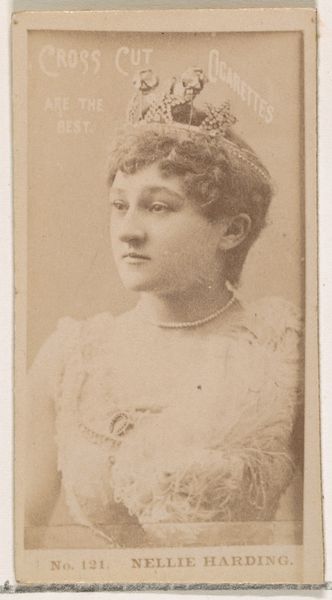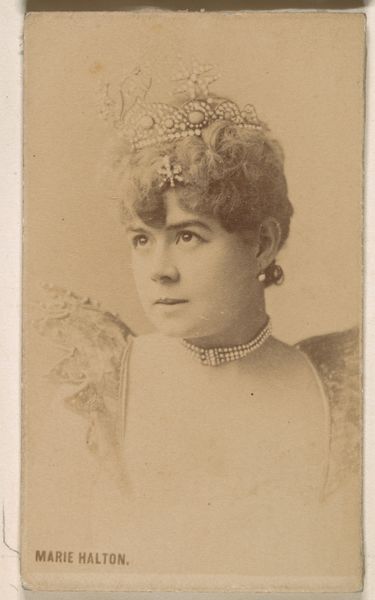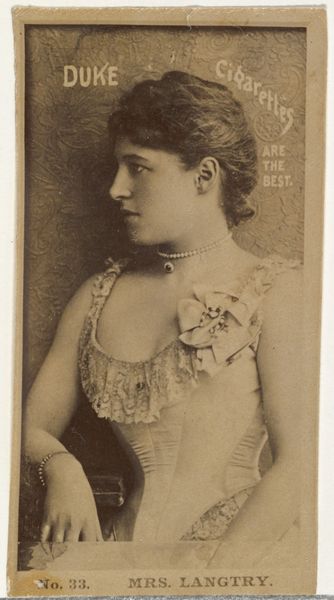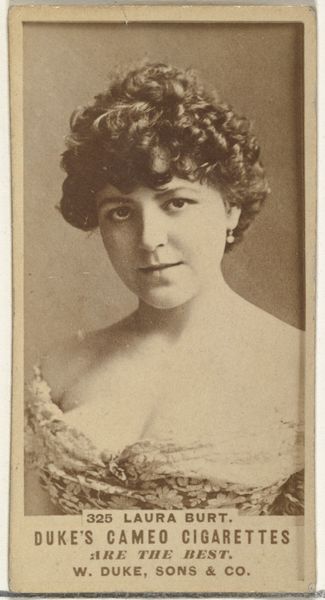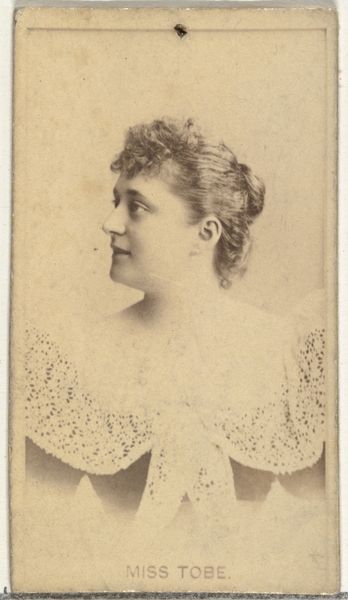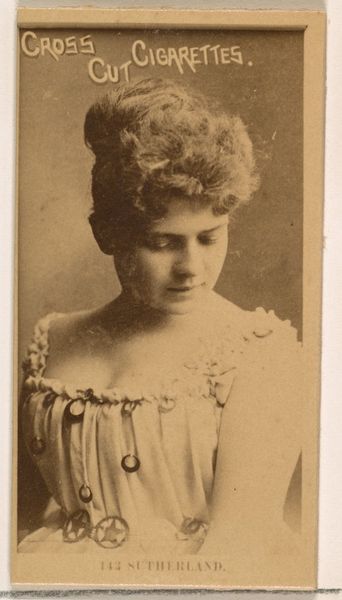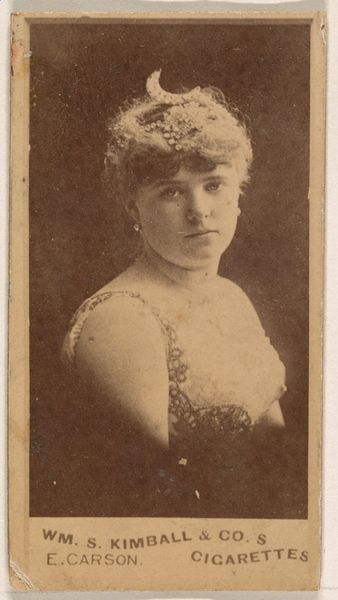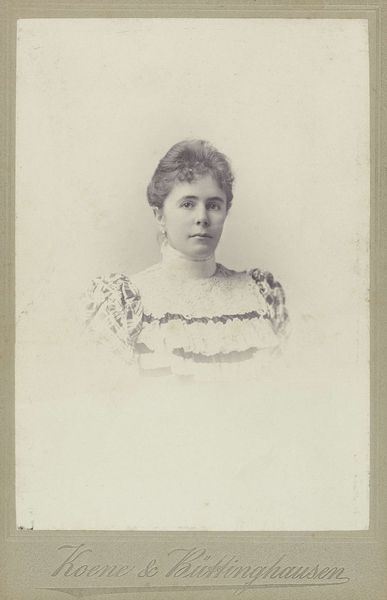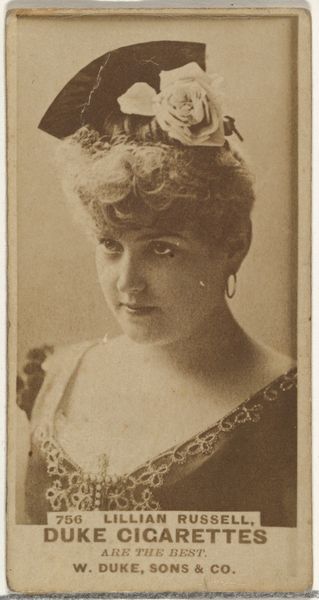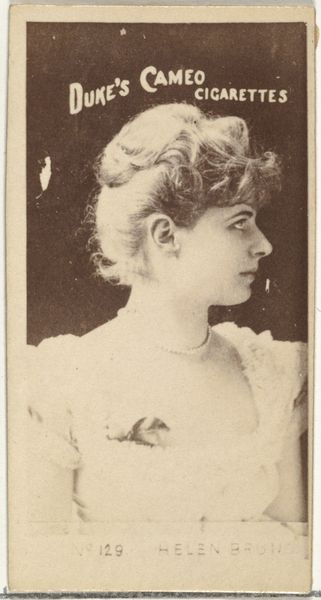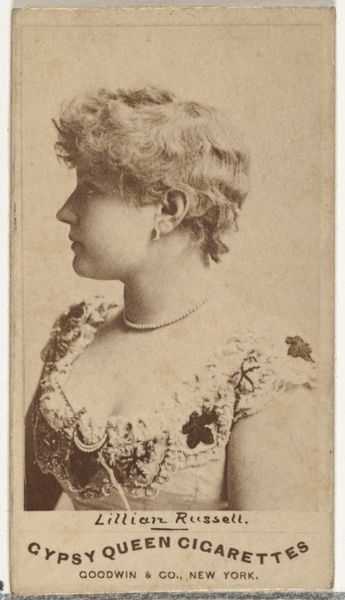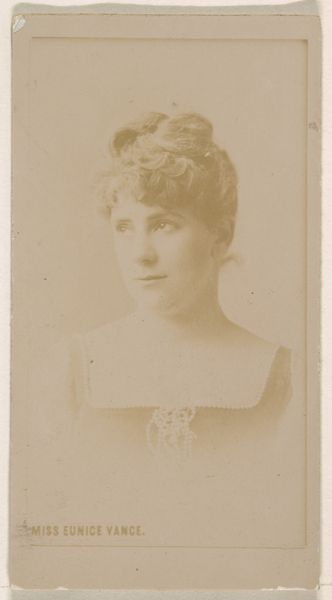
Card Number 570, Mrs. Langtry, from the Actors and Actresses series (N145-7) issued by Duke Sons & Co. to promote Duke Cigarettes 1880s
0:00
0:00
drawing, print, photography
#
portrait
#
drawing
# print
#
photography
#
historical photography
#
19th century
Dimensions: Sheet: 2 11/16 × 1 3/8 in. (6.8 × 3.5 cm)
Copyright: Public Domain
Editor: Here we have "Card Number 570, Mrs. Langtry," from the 1880s, a photo print made by W. Duke, Sons & Co. What strikes me is how the elegance of the portrait is juxtaposed with its role as cigarette advertising. What's your take on this piece? Curator: Well, exactly. The cigarette card acts as a window into the complexities of late 19th-century society, particularly in the ways women were perceived and commodified. Mrs. Langtry, a celebrated actress and socialite, is being used to sell cigarettes. Doesn’t that seem odd to you? Editor: I suppose so. So it’s like celebrity endorsement then, only much earlier? Curator: Yes, but consider the implications. This isn't just about selling cigarettes; it’s about associating consumption with idealized femininity. The image reinforces the idea that women should aspire to beauty and celebrity, even if it means becoming complicit in promoting harmful products. Who is setting those standards of beauty, and whose interests are being served? Editor: I see. It’s not simply a pretty picture. There's a deeper commentary on how society and industry co-opted female figures for commercial purposes. Curator: Precisely! How can we interpret her gaze, then, framed within this advertisement? Does she seem aware of her own image, her own objectification? Consider this in relation to feminist theories on the male gaze, too. Does this dynamic differ when circulated amongst other women? Editor: It makes me think about the limited roles women had then, and how even fame was often tied to someone's physical appearance. Curator: Indeed, this small card encapsulates so much about the socio-political dynamics of the time. It highlights how capitalist ventures capitalized not only upon nicotine addiction but also ideals of beauty, and the performance of feminity in order to cultivate wider marketing and cultural consumption. Editor: That's a lot to unpack from such a small object! I'll never look at vintage advertising the same way.
Comments
No comments
Be the first to comment and join the conversation on the ultimate creative platform.

